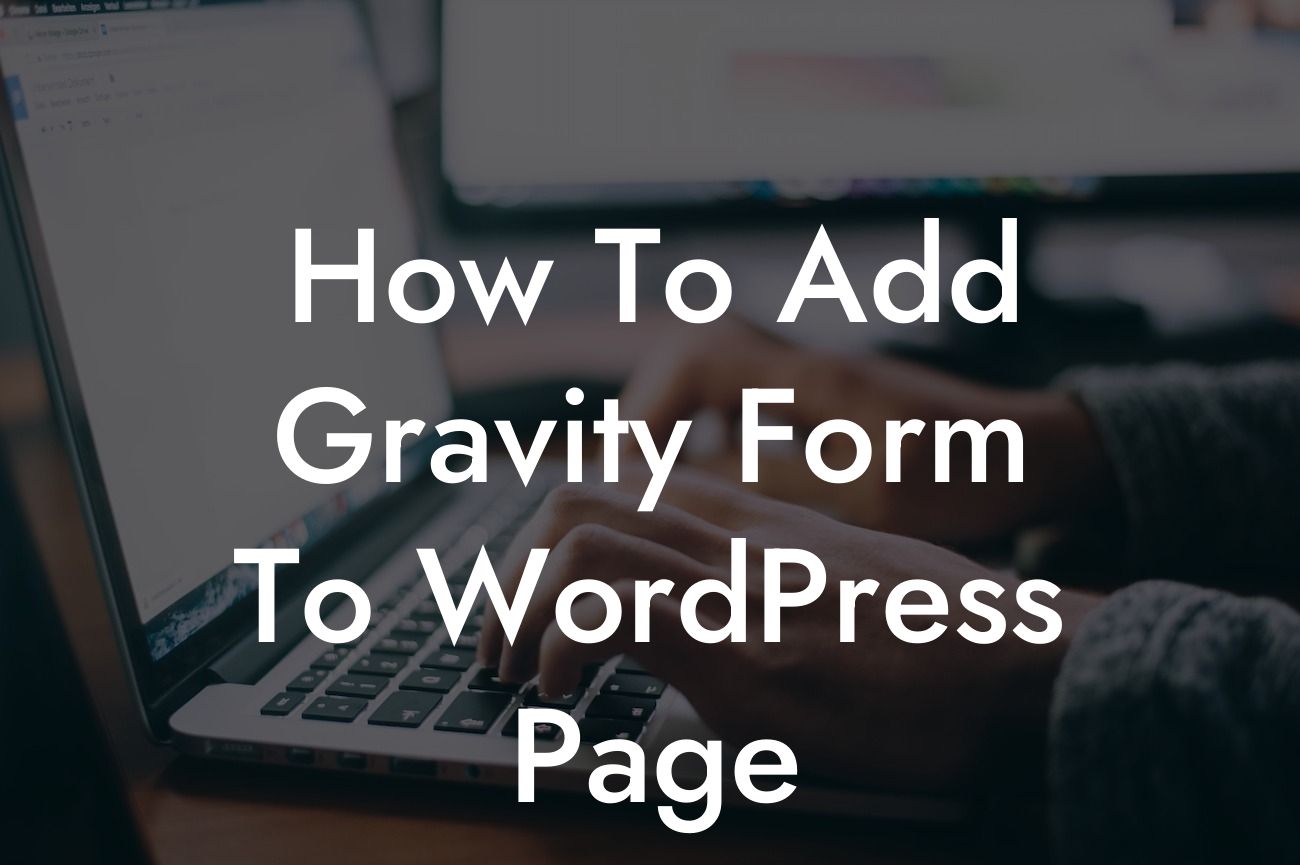Are you ready to take your WordPress page to the next level with a powerful form plugin? Look no further than Gravity Forms! This user-friendly and versatile plugin is designed exclusively for small businesses and entrepreneurs, offering a seamless way to create beautiful and functional forms. In this guide, we will walk you through the process of adding Gravity Form to your WordPress page, empowering you to supercharge your online presence and fuel your success.
Adding Gravity Form to your WordPress page is a straightforward process that will greatly enhance your website's functionality. Follow these simple steps to seamlessly integrate Gravity Form into your site:
1. Installation and Activation:
To get started, you need to install the Gravity Forms plugin. Head over to your WordPress dashboard, navigate to "Plugins," click on "Add New," and search for "Gravity Forms." Once you find it, click on "Install" and then "Activate" to enable the plugin.
2. Create a Form:
Looking For a Custom QuickBook Integration?
After activation, you will see a new menu item named "Forms" in your WordPress dashboard. Click on it to access the Gravity Forms page. Here, you can create a new form by selecting "New Form." Give your form a catchy name and start adding fields according to your requirements. Gravity Forms offers a wide range of field types, including text, multiple choice, file upload, and more.
3. Customize and Configure Form Settings:
Once you have added all the necessary fields, you can customize your form's appearance, layout, and functionality. Gravity Forms provides an intuitive interface that allows you to easily adjust colors, fonts, labels, and more. Additionally, you can configure advanced settings such as validation rules, conditional logic, and notifications to ensure a seamless user experience.
4. Add the Form to Your WordPress Page:
After finalizing your form, click on the "Update Form" button to save your changes. Now, it's time to add the form to your WordPress page. Simply create a new or edit an existing page, and you will notice a new "Add Form" button in the editor toolbar. Click on it, select your form from the dropdown menu, and insert it into your page. Save the changes, and voila! Your Gravity Form is now live on your WordPress page.
How To Add Gravity Form To Wordpress Page Example:
Let's say you run a small business that offers online consultations. By adding a Gravity Form to your WordPress page, you can create a professional contact form where potential clients can submit their inquiries. With the flexibility of Gravity Forms, you can include fields like name, email, phone number, and a message box. Once a form submission is received, Gravity Forms can be configured to automatically send you a notification email, making it easy for you to follow up with your prospective clients.
Congratulations! You have successfully learned how to add Gravity Form to your WordPress page. By implementing this powerful plugin, you have taken a giant leap towards enhancing your online presence and maximizing your success. Explore other informative guides on DamnWoo to further elevate your website's capabilities and functionality. Don't forget to check out our awesome WordPress plugins designed exclusively for small businesses and entrepreneurs. Share this article with others who can benefit from Gravity Forms, and let's revolutionize the way we engage with online forms!













